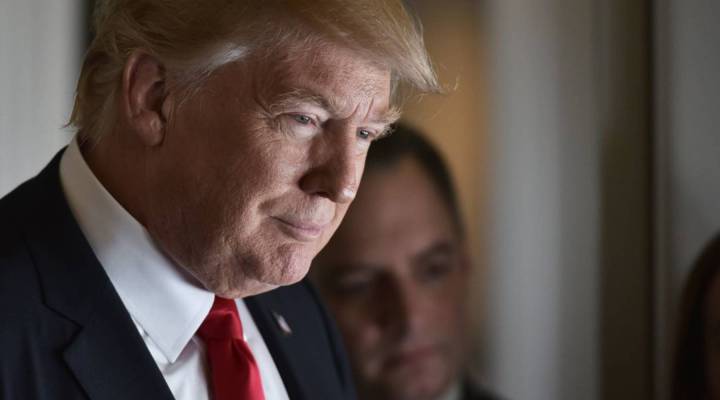
What will it take to throw out two regulations for every new one?
What will it take to throw out two regulations for every new one?

President Donald Trump goes for huge statements, right?
From the White House last week, he targeted the rules that govern business, and said “if there is a new regulation, they have to knock out two.”
The president has prioritized deregulation, arguing rules hamper economic growth, particularly for small business. But it’s much easier to issue an executive order calling to remove regulations than it is doing the hard work to actually rescind one.
Rule-making is serious business, though Sean Moulton with the Project on Government Oversight said it never seems to get the love it deserves.
“I know laws really get all the attention,” he said. “They are sexy. Everyone wants to cheer about a law getting signed by the president, but the reality is regulations are where the rubber meets the road.”
Moulton said usually, laws aren’t specific enough to be automatically enforced, so federal agencies have to turn statutory language into something usable — those are the regulations.
Trump’s order will only apply to major regulations. About 60 to 80 of those are created each year — things like energy efficiency standards for microwaves and preventing salmonella in eggs.
The rule-making process is long and tedious, filled with public notices, interagency review, and often, thousands and thousands of pages of documents.
“I’m the guy who sits in a room and nerds out on this stuff, reading this stuff for hours on end to make sense of it,” said Adam Eckman, a lawyer with the National Mining Association.
Eckman spent most of the past two-plus years working against the Stream Protection Rule, a rule aimed at protecting water bodies and wildlife from surface mining. The industry argued it would devastate coal companies. For seven years the two sides have battled back and forth. And meetings — oh, the dense, weedy meetings.
“Just a tweak of language, the placement of a comma — it can drastically change the requirements on the ground at a mine site,” Eckman said. “And we spent hours debating those finer points.”
Finally the rule took effect in January. About 10 days later, the House and the Senate voted to rescind it. It just needs the president’s signature to be gone for good.
See, some regulations are easier to roll back than others. Anything the Obama administration passed in its final six months, like the Stream Rule, only needs a simple majority in Congress.
“I would expect half a dozen regulations to be captured like that,” Susan Dudley said, the administrator of the Office of Information and Regulatory Affairs at the Office of Management and Budget under George W. Bush.
As the president goes after more established regulations, like pieces of Dodd-Frank, it won’t be so easy. They’ll have to go through the whole dance again. The point is to dissuade new administrations from coming in and changing the rules business plays by. That’s why old regulations won’t go quietly.
“People will litigate,” Dudley said, “because once a regulation is in effect, those who have already complied with it, they’re not going to say, ‘Oh, never mind, let’s remove that.’”
But even as Trump looks to shrink government, it’s going to take government to rescind all those regulations. The lesson is that eliminating a regulation takes as much time as creating one.
There’s a lot happening in the world. Through it all, Marketplace is here for you.
You rely on Marketplace to break down the world’s events and tell you how it affects you in a fact-based, approachable way. We rely on your financial support to keep making that possible.
Your donation today powers the independent journalism that you rely on. For just $5/month, you can help sustain Marketplace so we can keep reporting on the things that matter to you.












